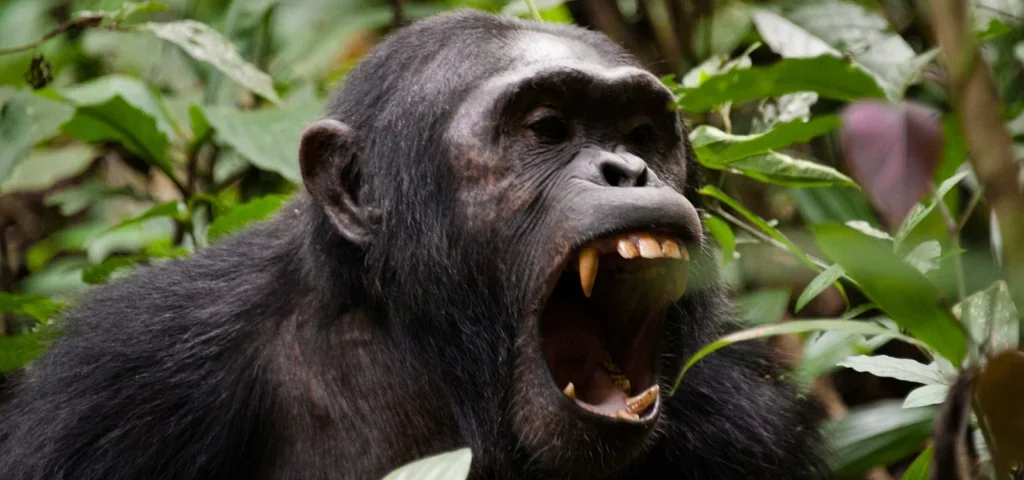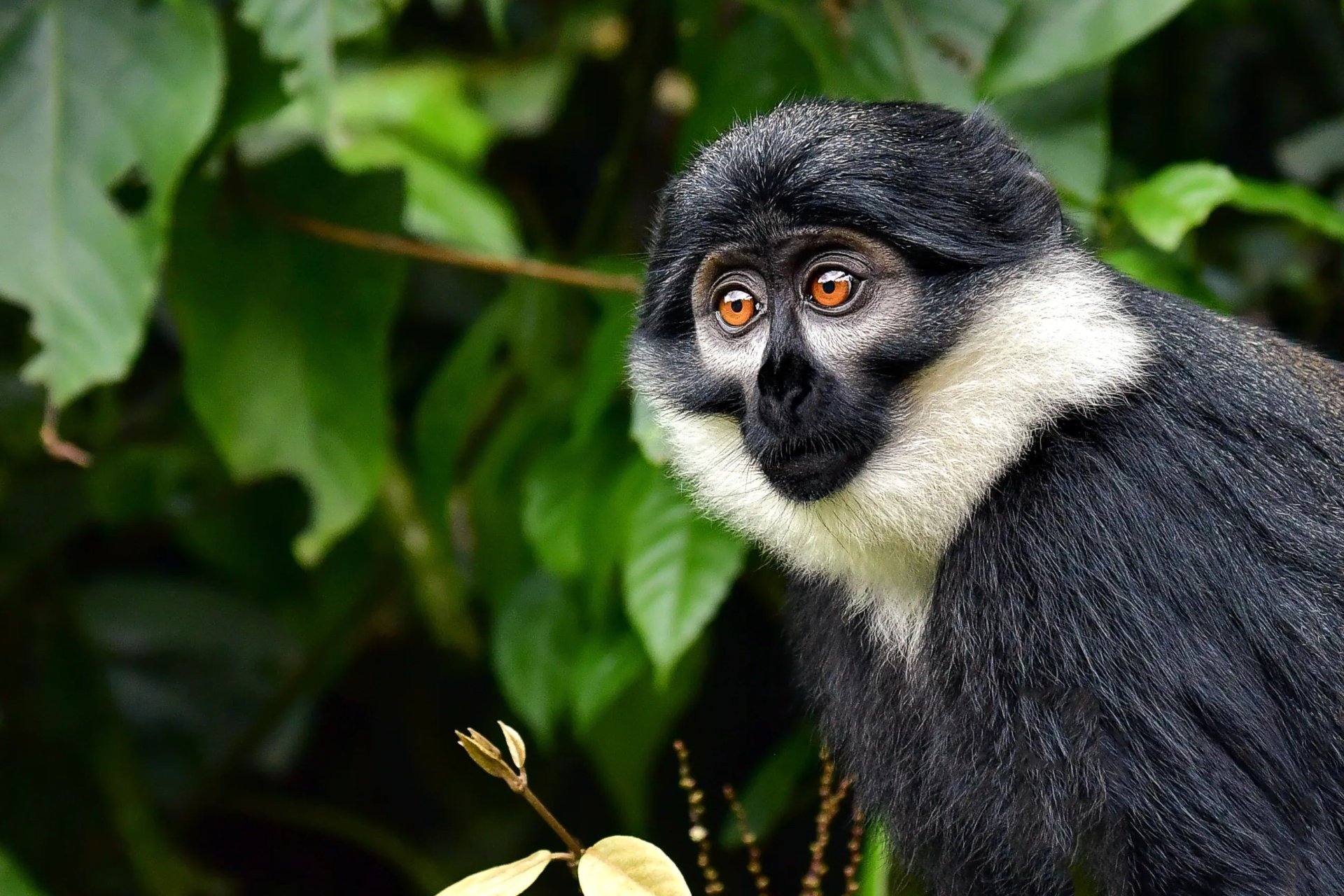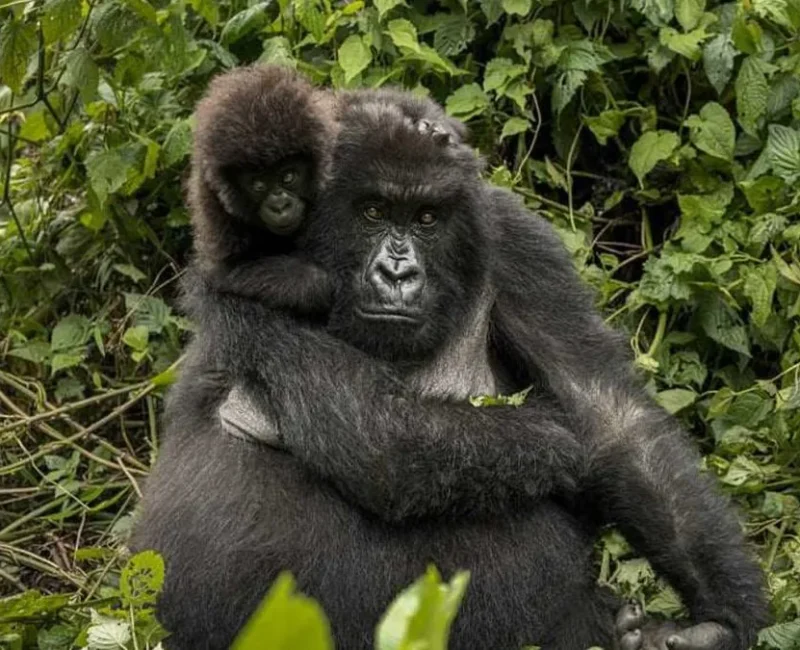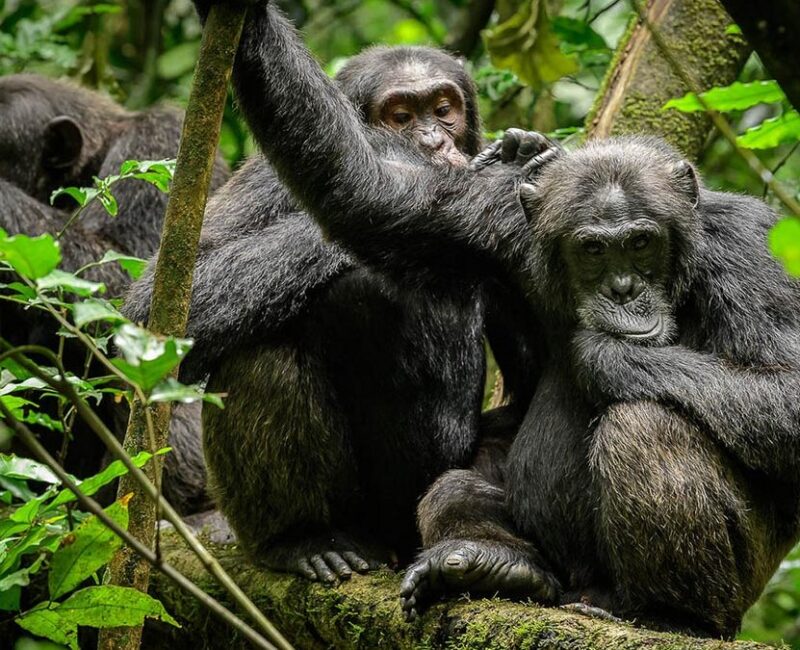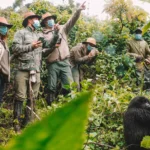
Group Gorilla Trekking
September 23, 2025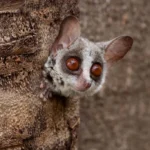
Nocturnal Primates in Uganda
September 23, 2025Other Primates in Uganda
Uganda is famous worldwide for its mountain gorillas but the country is also a primate paradise beyond this iconic species. Exploring Other Primates in Uganda provides travelers with diverse safari encounters that extend far beyond gorilla trekking. With over 20 primate species, Uganda hosts golden monkeys, chimpanzees, red colobus monkeys, black-and-white colobus monkeys, vervet monkeys and nocturnal species such as bush babies and pottos. These primates thrive in rainforests, bamboo forests, wooded grasslands, and savannahs, making Uganda one of the richest primate destinations in Africa.
For travelers planning Uganda safaris holidays, it is important to ask: what makes these primates so special and where can they be seen? In this guide, we explore the main primate species, their habitats and the best national parks for sightings. We also highlight how cultural experiences complement wildlife encounters creating a holistic safari holiday. Whether you are interested in Uganda Gorilla Trekking or broader Uganda Wildlife Safaris, understanding the diversity of Other Primates in Uganda will transform your safari into an unforgettable journey.
Golden Monkeys: The Jewel of Other Primates in Uganda
Among the most fascinating Other Primates in Uganda are the golden monkeys, which live exclusively in the bamboo forests of Mgahinga Gorilla National Park. Their striking golden-orange fur and playful behavior make them a unique highlight of any Uganda wildlife safari. Golden monkey trekking is an experience similar to gorilla trekking but with a lighter physical demand. Travelers often combine this activity with Uganda gorilla safaris to enjoy both gorillas and golden monkeys within the same park.
Golden monkeys thrive in the Virunga Volcanoes’ bamboo forests, and trekking them offers an excellent opportunity to witness their foraging habits and social interactions. Tourists often see them leaping through bamboo stalks or feeding on fresh shoots. Unlike gorilla trekking, golden monkey encounters usually involve larger groups, adding to the excitement.
Visitors staying in lodges near Mgahinga can enrich their safari holiday by engaging in Batwa cultural experiences. The Batwa, once forest dwellers, share stories, dances, and survival traditions, offering cultural depth to primate adventures. Combining golden monkeys, gorillas, and Batwa heritage ensures a complete Uganda Safari Holiday that blends wildlife and culture.
Black-and-White Colobus Monkeys: Common but Captivating
When exploring Other Primates in Uganda, the black-and-white colobus monkey often stands out. These striking primates, with their long white tails and contrasting coats, are among the most common monkeys seen on Uganda wildlife tours. They live in forests, woodlands, and even wooded grasslands, making them widely distributed.
The black-and-white colobus plays an important ecological role by dispersing seeds across forest ecosystems. Tourists often encounter them during nature walks in Kibale National Park, Bwindi Impenetrable National Park, and Queen Elizabeth National Park. Their graceful leaps between trees provide excellent photography opportunities.
Luxury and budget lodges around Kibale often organize guided walks that showcase colobus monkeys alongside other primates. After daytime primate tracking, visitors can enjoy cultural experiences such as community coffee tours or dance performances hosted by local groups. These activities transform simple wildlife sightings into deeper journeys that connect visitors with the people and ecosystems of Uganda. Whether planning luxury Uganda gorilla safaris or budget Uganda holidays, adding black-and-white colobus monkeys enriches the safari experience.
Red Colobus Monkeys: Rare and Rewarding Encounters
Few encounters with Other Primates in Uganda are as rewarding as spotting red colobus monkeys. These reddish-gray monkeys are recognizable by their tufted crowns and social groupings. They are mostly found in Semuliki National Park, making this location a special destination for primate enthusiasts.
The red colobus thrives in tropical lowland forests, where visitors may also see chimpanzees, mangabeys, and diverse bird species. Semuliki safaris often combine primate viewing with hot springs, riverine walks, and cultural interactions with the local Bakonjo and Batwa people.
Travelers staying near Semuliki lodges can experience cultural storytelling evenings or visits to traditional healers who use forest plants for medicine. These activities enrich a Uganda wildlife safari, giving context to the connection between primates, ecosystems, and local communities. Spotting the red colobus while engaging in cultural tours elevates a safari holiday into a journey of both discovery and understanding.
Red-Tailed Monkeys: Agile Forest Dwellers
The red-tailed monkey, also known as the spot-nosed monkey, is another highlight among Other Primates in Uganda. These agile primates are small, colorful, and easy to spot in Kibale, Bwindi, Semuliki, and Queen Elizabeth National Parks. They are highly social, often moving in mixed troops with colobus and mangabeys.
Tourists often enjoy watching their playful antics as they forage for fruits, insects, and young leaves. Their adaptability makes them one of the most widespread monkeys in Uganda, offering reliable sightings on Uganda wildlife tours.
Lodges near Bwindi often organize cultural activities such as traditional weaving workshops or cooking demonstrations led by local women. After encountering red-tailed monkeys in the forest, these cultural activities create a balance between wildlife adventures and human connections. Such experiences help visitors see the broader story of Uganda — where wildlife, people, and traditions harmoniously coexist.
L’Hoest’s Monkeys: The Rare Forest Specialists
Among Other Primates in Uganda, L’Hoest’s monkeys remain a treasured find. These shy, medium-sized monkeys live in Bwindi, Kibale, and Maramagambo forests. Their distinctive white beards and dark coats set them apart from other primates.
Because they are ground-dwelling and elusive, spotting them requires patience and guided expertise. Rangers in Kibale often lead treks that increase chances of observing these rare primates. L’Hoest’s monkeys add diversity to Uganda safaris, offering encounters that are less common than gorillas or colobus monkeys.
Visitors can enrich their safari holiday by pairing primate treks with cultural activities. Around Bwindi, lodges arrange visits to banana plantations or traditional music evenings with local communities. These experiences create a meaningful connection between natural and cultural heritage. Exploring L’Hoest’s monkeys alongside cultural tourism strengthens the value of Uganda safaris holidays, where adventure meets authenticity.
Nocturnal Primates: Bush Babies and Pottos
Safari experiences with Other Primates in Uganda are not limited to daytime. Night walks in Kibale and other parks reveal nocturnal species such as bush babies and pottos. Bush babies, also known as galagos, are small primates with large eyes and incredible jumping abilities. Pottos, on the other hand, are slower but equally fascinating, feeding on insects and fruits at night.
Guided night walks allow travelers to experience Uganda’s forests from a new perspective. The thrill of seeing glowing eyes under torchlight creates lasting memories. These nocturnal encounters add a unique dimension to Uganda safaris holidays, contrasting the more famous daytime treks.
Guests staying near Kibale lodges can combine night primate walks with cultural experiences such as storytelling by local elders. These sessions often share traditional tales about animals and spirits, blending wildlife with folklore. The result is a Uganda safari holiday that engages both curiosity and imagination.
Where to See Other Primates in Uganda
The diversity of Other Primates in Uganda is best experienced across several national parks. Kibale National Park, known as the primate capital of the world, offers chimpanzees, colobus, mangabeys, and night primates. Bwindi Impenetrable National Park combines gorilla trekking with encounters of red-tailed, colobus, and L’Hoest’s monkeys. Queen Elizabeth National Park provides sightings of vervet and red-tailed monkeys in addition to its famed tree-climbing lions.
Murchison Falls National Park is home to patas monkeys, while Semuliki National Park provides rare red colobus sightings. Mgahinga Gorilla National Park adds golden monkeys to the list, making it ideal for travelers combining Uganda gorilla trekking with golden monkey tracking.
Each park also provides cultural encounters, from Batwa heritage tours in Mgahinga to fishing village visits in Queen Elizabeth. This blend of primate and cultural experiences ensures that Uganda wildlife tours remain unmatched in diversity and depth.
The Ultimate Value of Exploring Other Primates in Uganda
Every traveler planning a Uganda safari should ask: why stop at gorillas when you can explore Other Primates in Uganda? Golden monkeys, colobus, mangabeys, red-tailed monkeys, nocturnal bush babies and more create a mosaic of experiences that enrich Uganda safari holidays. These primates live in varied habitats offering opportunities for adventure, learning and photography.
Moreover, cultural interactions around lodges deepen the safari journey. From Batwa storytelling to village walks and coffee tours, cultural experiences harmonize with wildlife encounters. By choosing Uganda wildlife safaris that include other primates, travelers gain more than memories. They also support conservation and community development.
Uganda truly is a primate paradise, offering world-class gorilla trekking alongside an astonishing variety of other primates. Choosing to explore both ensures your Uganda gorilla safaris or Uganda tours deliver a complete, holistic, and transformative safari holiday.

